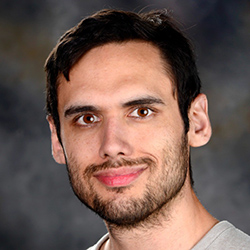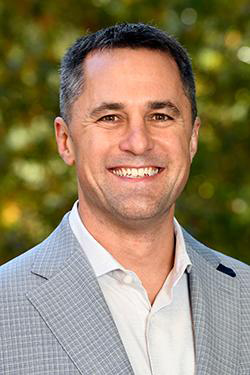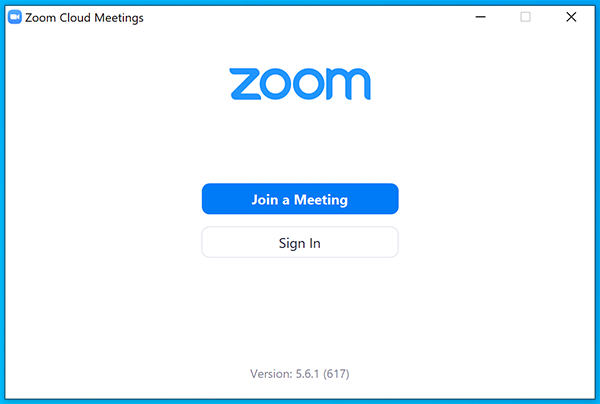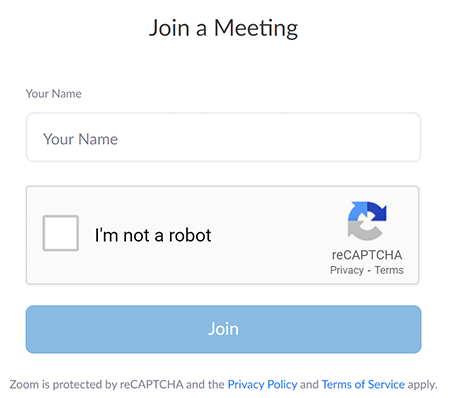Advancing Environmental Health Research with Artificial Intelligence and Machine Learning: Session I — AI & ML Applications to Understand Chemical Mixtures, Properties, and Exposures and Their Relationship to Human Health
Sponsored by: The NIEHS Superfund Research Program (SRP)
The NIEHS Superfund Research Program (SRP) is hosting a Risk e-Learning webinar series focused on using artificial intelligence (AI) and machine learning to advance environmental health research. The series will feature SRP-funded researchers, collaborators, and other subject-matter experts who aim to better understand and address environmental health issues by applying AI and machine learning approaches to complex issues.
Recent advances in AI and machine learning methods show promise to improve the accuracy and efficiency of environmental health research. Over the course of three sessions, presenters will discuss how they use AI and machine learning approaches to improve chemical analysis, characterize chemical risk, understand microbial ecosystems, develop technologies for contaminant removal, and more.
In the first session, AI & ML Applications to Understand Chemical Mixtures, Properties, and Exposures and their Relationship to Human Health, speakers will discuss how they apply machine learning and artificial intelligence techniques to understand chemical exposures and their effects on human health.
To learn about and register for the other sessions in this webinar series, please see the SRP website.
Naomi Halas, Ph.D., and Ankit Patel, Ph.D., will share updates on their work combining surface-enhanced spectroscopies (Raman and Infrared Absorption) with machine learning algorithms with the goal of developing simple and ultimately low-cost methods for the detection and identification of environmental toxins. As part of their discussion, they will share several approaches, including the use of machine learning algorithms to detect individual constituents in complex mixtures and the use of facial recognition strategies to identify specific chemical toxins in human placenta.
Jacob Kvasnicka, Ph.D., will present on a project he supported while he was a postdoctoral researcher at Texas A&M University SRP Center's Risk and Geospatial Sciences Core. There, his work involved developing an ML framework for predicting safe exposure levels to chemicals to avoid cancerous and reproductive/developmental effects. Most chemicals lack toxicity data related to human health, and this study uses ML to fill this gap, greatly expanding the ability to characterize chemical risks and impacts.
Trey Saddler will give attendees an overview of ToxPipe — a platform for performing retrieval augmented generation (RAG) over toxicological data. Comprised of a web interface, agentic workflows, and connections to various data sources, ToxPipe enables toxicologists to explore diverse datasets and generate toxicological narratives for a wide range of compounds.
Speakers:
- Naomi Halas, Ph.D., and Ankit Patel, Ph.D., Rice University
- Jacob Kvasnicka, Ph.D., U.S. Environmental Protection Agency
- Trey Saddler, NIEHS, Division of Translational Toxicology
- Moderator: David Reif, Ph.D., NIEHS, Division of Translational Toxicology
 Naomi Halas, PhD, Rice University (halas@rice.edu)
Naomi Halas, PhD, Rice University (halas@rice.edu)
Naomi J. Halas, Ph.D., is a University Professor and the Stanley C. Moore Professor of Electrical and Computer Engineering. She is a former Director of the Smalley-Curl Institute. Halas is best known for showing that the nanoscale internal and external morphology of noble metal nanoparticles controls their optical properties. Her work has been the force that merged chemical nanofabrication with optics, giving rise to the field of plasmonics. She pursues fundamental studies of coupled plasmonic systems as well as applications of plasmonics in many fields, including biomedicine, optoelectronics, chemical sensing, solar steam generation and water treatment, and plasmonic photocatalysis.
 Ankit Patel, PhD, Rice University (ankit.patel@rice.edu)
Ankit Patel, PhD, Rice University (ankit.patel@rice.edu)
Ankit B. Patel, Ph.D., is currently an Assistant Professor at the Baylor College of Medicine in the Department of Neuroscience, and at Rice University in the Department of Electrical and Computer Engineering. Ankit is broadly interested in the intersection between ML and computational neuroscience, two research areas that are essential for understanding and building truly intelligent systems, with a focus on learning abstractions.
 Jacob Kvasnicka, PhD, U.S. EPA (kvasnicka.jacob@epa.gov)
Jacob Kvasnicka, PhD, U.S. EPA (kvasnicka.jacob@epa.gov)
Jacob Kvasnicka is a postdoctoral researcher in the U.S. EPA's Center for Computational Toxicology and Exposure. He obtained a Master of Science in Environmental Health Sciences from the University of Michigan, where he developed a probabilistic human health risk assessment for the Hudson River PCBs Superfund Site. Jacob then investigated impacts of human behaviors and indoor microenvironments on chemical exposures while completing his Ph.D. at the University of Toronto. After earning his Ph.D., he joined Texas A&M University as a postdoctoral researcher in the SRP Center Risk and Geospatial Sciences Core until 2024. There, he developed an ML framework for predicting safe exposure levels to chemicals for general noncancer and reproductive/developmental effects.
 Trey Saddler, MS, NIEHS, Division of Translational Toxicology (trey.saddler@nih.gov)
Trey Saddler, MS, NIEHS, Division of Translational Toxicology (trey.saddler@nih.gov)
Trey Saddler, M.S., developed ToxPipe: Semi-Autonomous AI Integration of Diverse Toxicological Data Streams. His latest work uses generative AI and retrieval augmented generation to analyze multiomic toxicological data. He works with scientists to extract, clean, transform, analyze, and visualize data using Shiny, Quarto, and other scientific publishing methods. He also helps automate analysis pipelines, interact with biological active pharmaceutical ingredients (APIs), and store and retrieve data in relational and non-relational databases. His interests include FAIR data sharing principles, clean and reusable metadata, and discoverable data sets. He earned his master's degree in data analytics at Western Governors University.
Moderator:
 David Reif, PhD, NIEHS, Division of Translational Toxicology (david.reif@nih.gov)
David Reif, PhD, NIEHS, Division of Translational Toxicology (david.reif@nih.gov)
David Reif, Ph.D., is the Chief of the Predictive Toxicology Branch in the Division of Translational Toxicology. There, he leverages the expertise of the branch in data science, toxicogenomics, spatiotemporal exposures and toxicology, computational methods development, and new approach methods to advance predictive toxicology applications with partners across NIEHS, the interagency Tox21 Program, and the Interagency Coordinating Committee on the Validation of Alternative Methods. Previously, Reif was a professor of bioinformatics at North Carolina State University in the Department of Biological Sciences. He earned his master’s in applied statistics and his doctoral degree in human genetics from Vanderbilt University. He also completed postdoctoral training in exposure science and computational toxicology at the U.S EPA.
Webinar Slides and References:
-
 Slide Presentation for Naomi Halas and Ankit Patel, Rice University (6.67MB/PDF)
Slide Presentation for Naomi Halas and Ankit Patel, Rice University (6.67MB/PDF)
-
 Slide Presentation for Jacob Kvasnicka, U.S. EPA (2.17MB/PDF)
Slide Presentation for Jacob Kvasnicka, U.S. EPA (2.17MB/PDF)
-
 Slide Presentation for Trey Saddler NIEHS (8.07MB/PDF)
Slide Presentation for Trey Saddler NIEHS (8.07MB/PDF)
Additional Resources:
Thank you for participating in our webinar. We would like to receive any feedback you might have that would make this service more valuable.
Help & FAQs
- Frequently Asked Questions
- Content Questions?
Call Dylan Williams at 202-982-5717 or dylan.williams@nih.gov - Technical Problems?
Leave us a comment - Cancel Your Registration
- My Participation Records
- CEU Credits and PDHs
Zoom Resources
Before Webinar Day
This seminar will be delivered through Zoom. Participants are encouraged to update to the latest version of the Zoom application for the best experience.
If you are unable to install the Zoom application, most functions will be available if you join just using a modern web browser such as Chrome, Edge or Firefox. We strongly encourage you to run the Zoom Meeting Test prior to attending this webinar. Technical support on the day of the webinar will be very limited and subject to significant delays.
Backup Conference Call
If you cannot participate using online audio, you may join the optional call in line. After checking in for the live event using the instructions listed below, you will see several options to participate. Please click the links in option 4 to follow along by phone and obtain the call in number. If you cannot access the phone number, you may request the call in line from the event moderator in the Q&A or send an email to Jean Balent at balent.jean@epa.gov
Click on "Join Webinar" at the top of this screen, enter your exact first and last name as you registered and enter the number of people attending at your location (including yourself). You should then be taken to the Zoom meeting room. Join with Zoom Application: For those joining with the Zoom application, you may be prompted to sign with a zoom account or join as a guest without signing in.
If joining as a guest, you will be prompted to enter your name and email address. Remember your name, image, video or voice may be visible to others in the live event. When done, click "Join" When it is time for the live event to start, the meeting host will admit you to the live Zoom meeting. Join via web browser (without the Zoom Application): For those joining with a web browser, you may close any pop ups prompting you to download the Zoom app. The next window will allow you to enter your name (first name and last name) and check the box that you are not a robot. Click the blue join button. You may also be asked to provide your email address before joining the room. Remember your name, image, video or voice may be visible to others in the live event. When done, click "Join" When it is time for the live event to start, the meeting host will admit you to the live Zoom meeting. You may need to periodically refresh the browser window to confirm if the host has admitted you. The presenters will control what slide you are viewing. You may submit questions online for the instructors to answer during the webinar by typing in the "Q&A" area. It is not necessary to wait until the question and answer periods to submit questions. At the end of the webinar you will be guided to our feedback form and links to additional resources, including the complete presentation. These links will remain active after the webinar. Provided for your convenience. Importing or accepting the invitation within this iCalendar file is not required, and declining the invitation does not cancel your registration. For additional information on iCalendar, please see our
iCalendar Help It is EPA's policy to make reasonable accommodation to persons with disabilities wishing to participate in the agency's programs and activities, pursuant to the Rehabilitation Act of 1973, 29 U.S.C. 791. Any request for accommodation should be made to at or , preferably one week or more in advance of the webinar, so that EPA will have sufficient time to process the request. EPA would welcome specific recommendations from requestors specifying the nature or type of accommodation needed. EPA welcomes specific recommendations from requestors specifying the nature or type of accommodation needed. Please note that CLU-IN provides both alternate phone call-in options and closed captioning for all webinars, and requests for these specific accommodations are not necessary.
Webinar Day, Checking In



Moving Through Slides
Feedback & Links to Additional Resources
iCalendar File
Rehabilitation Act Notice for Reasonable Accommodation
Rehabilitation Act Notice for Reasonable Accommodation
It is EPA's policy to make reasonable accommodation to persons with disabilities wishing to participate in the agency's programs and activities, pursuant to the Rehabilitation Act of 1973, 29 U.S.C. 791. Any request for accommodation should be made to at or , preferably one week or more in advance of the webinar, so that EPA will have sufficient time to process the request. EPA would welcome specific recommendations from requestors specifying the nature or type of accommodation needed. EPA welcomes specific recommendations from requestors specifying the nature or type of accommodation needed. Please note that CLU-IN provides both alternate phone call-in options and closed captioning for all webinars, and requests for these specific accommodations are not necessary.
Webinar Recording
By participating in this CLU-IN webinar, you automatically agree to authorize recording of audio and visual content presented during this live event and consent to subsequent use of this recording in the public domain by the U.S. Environmental Protection Agency. This recording may include questions, comments and poll responses provided by you during the live event in addition to your name, voice, image or likeness. This recording will be made available after the conclusion of the live event as part of the CLU-IN webinar archives, and will remain available indefinitely. If you do not wish to consent to the recording, please do not join the live event, and contact Jean Balent at 202-566-0832 or balent.jean@epa.gov to discuss your concerns.
Content Disclaimer
This webinar is intended solely to provide information to the public. The views and opinions expressed as part of this webinar do not necessarily state or reflect those of the U.S. Environmental Protection Agency. It is not intended, nor can it be relied upon, to create any rights enforceable by any party in litigation with the United States, or to endorse the use of products or services provided by specific vendors. With respect to this webinar, neither the United States Government nor any of their employees, makes any warranty, express or implied, including the warranties of merchantability and fitness for a particular purpose, or assumes any legal liability or responsibility for the accuracy, completeness, or usefulness of any information, apparatus, product, or process disclosed, or represents that its use would not infringe privately owned rights.

